
Journal of Computer Chemistry-Japan
Scope & Guideline
Exploring Innovative Solutions for Complex Chemical Challenges
Introduction
Aims and Scopes
- Computational Chemistry Methods:
The journal publishes research on various computational methods, including quantum chemistry, molecular dynamics, and machine learning, aimed at improving the accuracy and efficiency of chemical simulations. - Material Science and Nanotechnology:
A significant focus area is the study of materials at the molecular level, particularly nanostructures and their properties, including electronic and optical characteristics. - Chemical Education and Visualization:
The journal emphasizes educational aspects of computational chemistry, offering insights into visualization techniques and tools that facilitate the understanding of complex chemical concepts. - Interdisciplinary Applications:
Research that applies computational chemistry to diverse fields such as drug discovery, renewable energy (e.g., solar cells), and environmental chemistry is a core area, promoting the integration of chemistry with other scientific disciplines. - Quantum Molecular Dynamics:
The journal features studies on quantum molecular dynamics, exploring phenomena such as photoisomerization and protein folding, which are crucial for understanding biological processes at a molecular level.
Trending and Emerging
- Machine Learning in Chemistry:
There is a significant rise in papers integrating machine learning techniques into computational chemistry, reflecting the growing importance of data-driven approaches to predict chemical behavior and properties. - Quantum Computing Applications:
Research exploring the applications of quantum computing in chemical simulations is gaining traction, showcasing the potential of quantum technologies to revolutionize computational chemistry. - Sustainable Energy Solutions:
The journal has seen an increase in studies focused on sustainable energy, particularly in the development and optimization of materials for solar cells and fuel cells, highlighting a commitment to addressing global energy challenges. - Complex Biological Systems:
Emerging themes include the simulation and modeling of complex biological systems, such as protein folding and interactions, which are critical for understanding biochemical processes and drug interactions. - Interdisciplinary Research Initiatives:
There is a growing trend towards interdisciplinary research that combines computational chemistry with fields like materials science, biology, and environmental science, fostering a holistic approach to solving complex scientific problems.
Declining or Waning
- Traditional Computational Techniques:
There has been a noticeable decrease in the publication of papers focusing solely on traditional computational techniques without the integration of newer methodologies like machine learning or advanced simulation techniques. - General Chemical Theory:
Papers discussing general chemical theories or principles without a computational framework have seen a decline, indicating a trend towards more application-driven research. - Basic Visualization Approaches:
While visualization remains important, the basic approaches to visualizing molecular structures and properties are becoming less frequent, as researchers seek more advanced and interactive visualization tools. - Conventional Drug Discovery Methods:
Traditional drug discovery methods that do not incorporate computational or machine learning approaches are less frequently covered, reflecting a shift towards more innovative and efficient methodologies. - Static Models of Chemical Systems:
Research focused on static or equilibrium models of chemical systems has decreased, with a growing preference for dynamic and time-dependent studies that reflect real-world chemical behavior.
Similar Journals
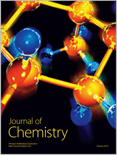
Journal of Chemistry
Empowering Researchers Through Open Access ChemistryJournal of Chemistry, published by Hindawi Ltd, serves as a critical platform for advancing knowledge in the field of chemistry, particularly in its miscellaneous sub-disciplines. With an impressive 2023 Scopus Rank of #123 out of 408 and positioned in the Q2 quartile, this journal exemplifies a robust academic rigor that appeals to researchers, professionals, and students alike. It features articles related to innovative chemical research and developments, catering to a diverse audience eager to contribute to the growing body of literature in the chemical sciences. The journal has been operational from 2013 to 2024, and its Open Access model ensures that findings are easily accessible to a global audience, fostering collaboration and knowledge sharing. With a commitment to quality and relevance, the Journal of Chemistry continues to play a significant role in shaping contemporary chemical research and education.
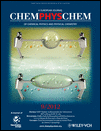
CHEMPHYSCHEM
Fostering High-Impact Discoveries in Theoretical and Experimental ScienceCHEMPHYSCHEM, published by WILEY-V C H VERLAG GMBH in Germany, stands as a pivotal resource for researchers and professionals in the fields of Atomic and Molecular Physics, as well as Physical and Theoretical Chemistry. With a commendable impact across its converged years from 2000 to 2024, the journal is categorized in the second quartile (Q2) for both aforementioned fields according to the 2023 metrics, underscoring its significance in advancing scientific dialogue and research. CHEMPHYSCHEM is committed to disseminating high-quality, peer-reviewed research articles that delve into the intricate interplay between chemistry and physics, making it an essential read for students and experts alike. The journal does not currently offer open access options, allowing for focused scholarly discussions that cater to the academic community's needs. As reflected in its Scopus rankings, CHEMPHYSCHEM maintains respectable standings, ranking #84/224 and #90/189 in its respective categories, demonstrating its commitment to high-impact research and innovation.

ACS Physical Chemistry Au
Unlocking the potential of interdisciplinary science.ACS Physical Chemistry Au, published by the American Chemical Society, is a pioneering open-access journal that provides a dynamic platform for researchers and professionals in the field of physical chemistry and its interdisciplinary connections. Since its inception in 2021, the journal has made significant strides in disseminating high-quality research, evidenced by its impressive standings in various categories, including Q1 rankings in Chemistry (miscellaneous), Computational Theory and Mathematics, and Physical and Theoretical Chemistry as of 2023. With a commitment to enhancing the visibility and accessibility of scholarly work, ACS Physical Chemistry Au offers a robust Open Access model, ensuring that groundbreaking research is freely available to a global audience. The journal serves as an essential resource for researchers, students, and practitioners seeking to advance knowledge in computational theory, physical chemistry, and their applied sciences. With an ISSN of N/A and an E-ISSN of 2694-2445, the journal is poised to make a lasting impact in the academic community.
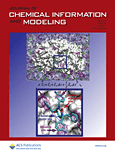
Journal of Chemical Information and Modeling
Advancing the Frontiers of Chemical Informatics.Journal of Chemical Information and Modeling is a premier scholarly publication dedicated to advancing the fields of chemical engineering, chemistry, and computer science applications. Published by the reputable American Chemical Society, this journal significantly contributes to the scientific community through innovative research and critical reviews that facilitate the understanding and application of chemical information. With an impressive impact factor and a distinguished ranking in multiple categories—such as Q1 in Chemical Engineering and Q1 in Chemistry—the journal is an indispensable resource for researchers and professionals alike. As open access is not currently available, the journal preserves a selective distribution model that ensures high-quality content is accessible to a dedicated audience. By exploring the intersections of data science and chemical informatics, the Journal of Chemical Information and Modeling fosters interdisciplinary collaboration and innovation, positioning itself as a leader in its field. Researchers, professionals, and students are encouraged to engage with this influential platform for the latest developments in chemical information science.
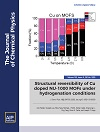
JOURNAL OF CHEMICAL PHYSICS
Bridging Chemistry and Physics for Tomorrow's InnovationsJOURNAL OF CHEMICAL PHYSICS, published by AIP Publishing, stands as a premier scholarly source within the realms of physical and theoretical chemistry, as well as physics and astronomy. With an enduring history dating back to 1933 and converging until 2024, this journal has established itself as a cornerstone of the scientific community, evidenced by its prestigious Q1 categorization in multiple fields, including medicine and general physics. It is ranked 37th out of 243 in the general physics and astronomy category and holds a commendable 39th position in physical and theoretical chemistry according to Scopus rankings, highlighting its significant impact in these disciplines. Although not an open-access journal, it caters to a wide audience of researchers, professionals, and students seeking to deepen their understanding of the interactions and dynamics of chemical systems. With its expertly curated content, the JOURNAL OF CHEMICAL PHYSICS continues to play a vital role in advancing knowledge and fostering innovation across its core subjects.

JACS Au
Unleashing innovative ideas in analytical and organic chemistry.JACS Au, published by the American Chemical Society, is a premier open access journal dedicated to advancing research in the rapidly evolving fields of analytical chemistry, organic chemistry, and theoretical chemistry. Since its inception in 2021, JACS Au has quickly established itself as a leading platform for high-quality research, reflected in its Q1 rankings across multiple categories for 2023, including Organic Chemistry and Analytical Chemistry. The journal focuses on innovative methodologies and applications that drive the discipline forward, making it an essential resource for researchers, professionals, and students alike. With an impressive Scopus ranking, consistently placing in the top tiers of its categories, and offering a broad range of access options for its readership, JACS Au aims to foster collaboration and disseminate transformative ideas that impact the global scientific community. Exploring diverse topics within chemistry, this journal provides a vital conduit for sharing groundbreaking research and enhancing scientific dialogue.

Trends in Chemistry
Connecting Ideas, Transforming ChemistryTrends in Chemistry, published by CELL PRESS, stands at the forefront of the multidisciplinary field of chemistry, offering cutting-edge research and insights that shape contemporary scientific discourse. With its impressive rank of #12 out of 408 in the General Chemistry category of Scopus—placing it in the 97th percentile—this journal represents the pinnacle of academic excellence and innovation. Since its inception in 2019, it has provided a platform for sharing pivotal developments and trends in the chemical sciences, making it an invaluable resource for researchers, professionals, and students alike. Although it operates under subscription access, Trends in Chemistry is dedicated to expanding the frontiers of knowledge and fostering a vibrant academic community. Its Q1 quartile ranking underscores its significance and authority in the field, ensuring that it remains an essential reference point for anyone engaged in the ever-evolving world of chemistry. With its impactful contributions, Trends in Chemistry not only reflects current advancements but also drives future innovation in the discipline.
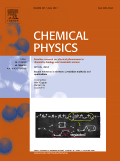
CHEMICAL PHYSICS
Illuminating the Path of Chemical Knowledge Since 1973.CHEMICAL PHYSICS is a premier international journal published by Elsevier, dedicated to advancing the field of theoretical and experimental chemistry, particularly within the physical domain. Since its inception in 1973, this journal has served as a platform for disseminating cutting-edge research, fostering collaboration among researchers and professionals in the community. With a notable impact factor and recognized in the Scopus rankings, CHEMICAL PHYSICS holds esteemed positions in two categories: Q3 in Physical and Theoretical Chemistry and Q2 in Physics and Astronomy (miscellaneous). Published in the Netherlands, the journal features high-quality articles that cover a broad spectrum of topics, aiming to deepen understanding of chemical phenomena through innovative approaches. Although open access options are not currently available, the journal remains invaluable for researchers, students, and professionals seeking to stay informed about the latest developments in chemical physics. With convergence years extending from 1973 to 2025, CHEMICAL PHYSICS continues to be a significant contributor to the academic discourse in its field.

JOURNAL OF CHEMICAL SCIENCES
Empowering Chemists: Open Access to Scientific ExcellenceThe JOURNAL OF CHEMICAL SCIENCES, published by the Indian Academy of Sciences, is a premier academic journal that serves the global community of chemists and researchers. With an ISSN of 0974-3626 and an E-ISSN of 0973-7103, this journal is pivotal in disseminating high-quality research across diverse areas of chemical sciences. As of 2023, it holds a respectable Q3 ranking in the field of Chemistry (miscellaneous) and ranks #215 out of 408 in General Chemistry according to Scopus, reflecting its commitment to advancing the discipline. Operating in an open-access format, the journal ensures that research findings are readily accessible to a broader audience, fostering collaboration and innovation. Established in 1980 and continuing to evolve, the journal's scope encompasses fundamental and applied chemistry, and aims to bridge gaps between theoretical and practical applications. With a mission to support the scientific community, the JOURNAL OF CHEMICAL SCIENCES is an essential resource for researchers, professionals, and students alike, providing a platform for the exchange of groundbreaking ideas and discoveries.
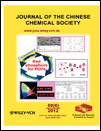
JOURNAL OF THE CHINESE CHEMICAL SOCIETY
Exploring the Frontiers of Chemical ScienceJOURNAL OF THE CHINESE CHEMICAL SOCIETY, published by WILEY-V C H VERLAG GMBH, is a vital resource in the field of chemistry, focusing on a broad array of topics pertinent to general chemistry and its advancing sub-disciplines. Established in 1954 and running through 2024, this journal serves as a significant platform for the dissemination of high-quality research, showcasing innovative findings and developments within the chemical sciences. With its Q3 category ranking and positioning at Rank #203 in General Chemistry per Scopus, it reflects the journal's commitment to research excellence and impact. While not an open-access publication, it ensures accessibility to a global audience, making it an essential tool for researchers, professionals, and students alike seeking to stay informed and engaged in the evolving landscape of chemistry.